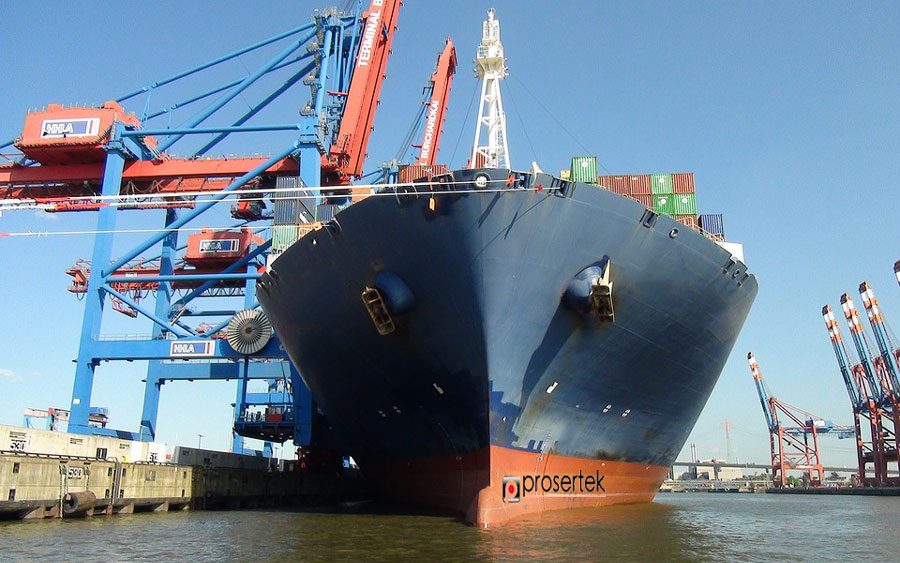Ports around the world are facing increasingly bigger challenges. Literally, as the growing size of container ships calls the existing infrastructure at many port terminals into question. The so-called mega container ships require an overhaul of the ports that receive them.
Mega container ships, space and infrastructure
What sizes are we talking about? The largest mega container ship to date is the MSC Gülsün, which has a capacity for 23,000 TEU and there are going to be another 10 twin vessels made exactly the same. At 400m long and 61.5m wide, it sets a new standard that will be matched, if not surpassed, in the forthcoming years.
This race to increase in size and capacity is admirable, but there is no point in having huge ships if the terminals cannot keep up. When these ships reach a port, they not only need more space, but also customised infrastructure, such as more reliable fenders and bollards with a greater capacity, adapted gantry cranes or dredgers that enable deep-draught ships to pass through.
A paradigmatic case of dealing with the increase in mega container ships can be found at the port of Liverpool. Liverpool2 is an extension just for container ships and it was built with the future in mind. Two examples are the installation of Megamax cranes, with rails that can accommodate larger cranes and a harbour infrastructure with adequate draught facilities.
Port equipment for mega container ships
Supposing we have the space, what port equipment do we need to strengthen to take on the challenge of mega container ships? The berthing requirements are often given less priority and take a longer time to be dealt with. This is a mistake that can lead to serious incidents.
Fenders
The fenders are one of the main safety elements at the harbour, absorbing the kinetic energy of a vessel on berthing. In the case of container ships, the fenders must be specially designed to bear the berthing impact of ship of this size and with a larger load than any other known vessel.
Bollards
The capacity of existing bollards is being seriously tested by the increase in ship size. Particularly robust bollards are required, which can be guaranteed to operate with the necessary workloads. It is important to bear in mind that the bollards’ real capacity may be lower than the nominal capacity. For this reason, high quality equipment and manufacturers and installers with proven prestige are required.
Gantry cranes
When it comes to loading, unloading, stowing and unstowing in mega container ships, ports need larger gantry cranes. It is also a good idea for them to be scalable infrastructures, as is the case in Liverpool2, to take into account what the future may bring.
Berthing aid systems
Obviously, larger vessels require greater care to be taken in operations. To ensure these manoeuvres are carried out safely and correctly, it is essential to have a berthing aid system, such as the BAS by Prosertek. Among its assistance modules, one of the most outstanding is the Dockmoor-MS which measures the tension on the mooring lines and issues a warning when there is an overload.



Comments are closed.